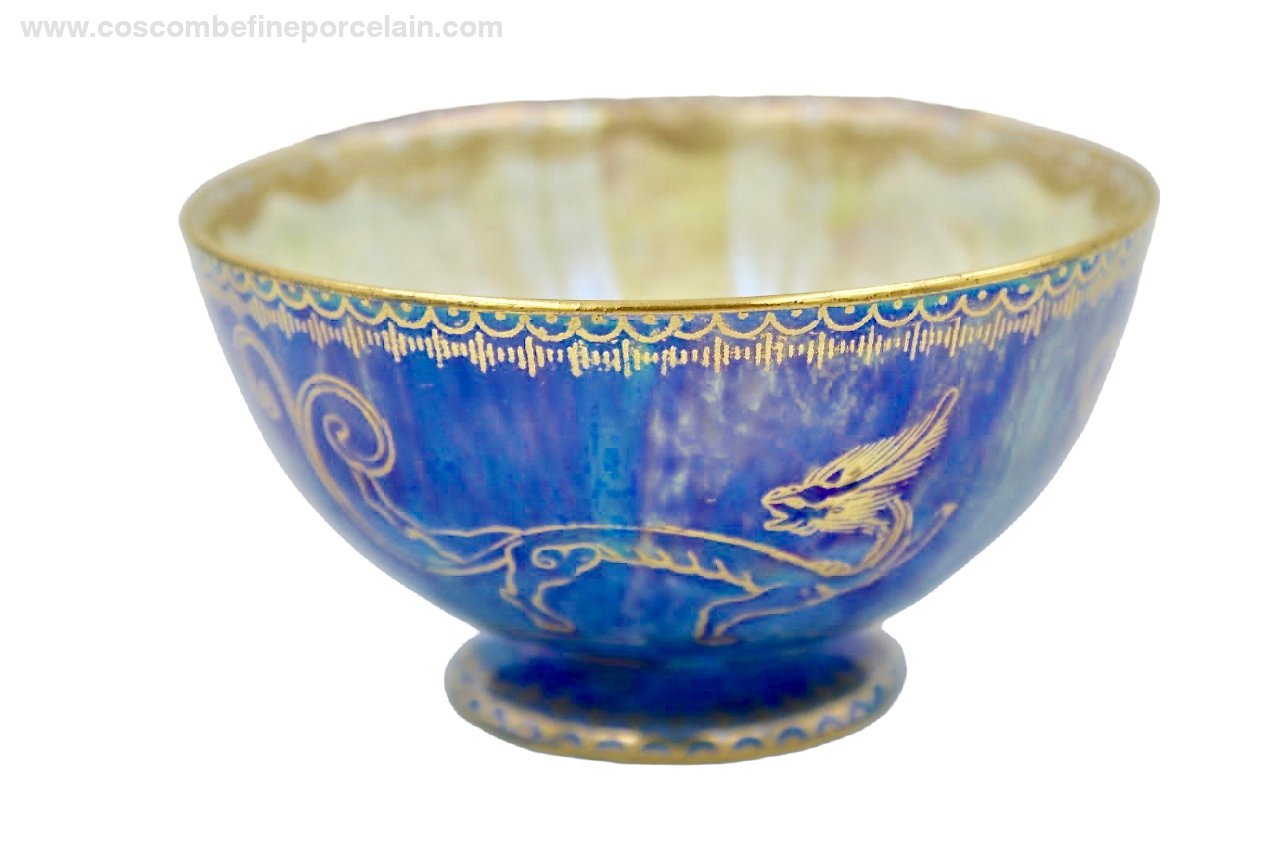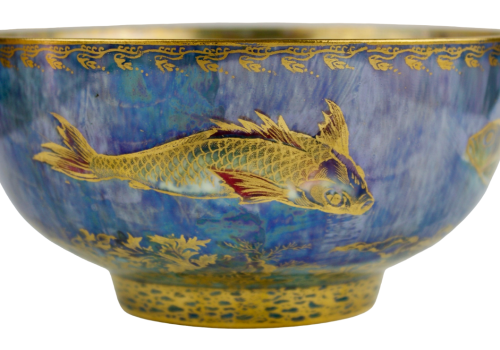The Factory
The Wedgwood story began in 1759, when Josiah Wedgwood, aged just twenty-nine, started as an independent potter in Burslem, Staffordshire, England. He began to experiment avidly with clay, exploring its many possibilities. Creative, energetic, an astute businessman and patron of the arts, he quickly became Britain’s most inspired and successful ceramics pioneer. His genius led English pottery from a cottage craft to an art form and international industry.
The factory rapidly gained success and was soon one of the largest manufacturers of Staffordshire pottery exporting across Europe as far as Russia, and to the Americas. The business continued to flourish in the 19th and early 20th centuries, remaining in the hands of the Wedgwood family until the late 1960’s.

Etruria, the penultimate site for the Wedgwood factory, was named after the Italian district of Etruria, home of the Etruscan people renowned for their artistic products. The site covered 350 acres and was next to the Trent and Mersey Canal.
Manufacture
Wedgwood’s first decades of success came from producing wares that looked very like porcelain, and had broadly the same qualities, though not quite as tough, nor as translucent. English stoneware, including creamware, black basaltes, and jasperware are still produced in both old and modern designs at the Wedgwood factory, which moved to Barlaston, Stoke-on-Trent, Staffordshire, in 1940.

Creamware 1762
Cream-coloured earthenware called creamware or Queen's ware in consequence of royal patronage. Mass-produced, it was high quality and durable. It filled a need for good tableware that the middle class could afford.

Black Basalt 1768
Developed in 1768 a black unglazed stoneware of fine texture, hard enough to strike sparks on contact with steel, it has a mat finish after firing but can be polished and faceted, making it ideal for imitating antique and Renaissance objects.

Jasperware 1774
Introduced in 1775, a white matte unglazed stoneware resembling biscuit porcelain and having ornamental potentialities similar to basalt. It can be stained with many colours, from pale pastels (such as the famous pale blue) to stronger tints.
The Staffordshire factories introduced Bone China as an alternative to the translucent and delicate Chinese porcelain and factories like Wedgwood had increasing success with porcelain – Soft Paste in England and France, and Hard Paste mostly in Germany – which were still competing with the more expensive Chinese and Japanese imports.
Soft Paste Porcelain is weaker than “true” hard paste porcelain and does not require either the high firing temperatures or the special mineral ingredients. The range of materials used – always clay and often ground glass, flint and quartz.
Hard Paste Porcelain , used in Chinese and Japanese porcelain, was successfully produced at Meissen in Germany in 1708. Kaolin (white clay), feldspar and quartz fused at high temperatures to give whiteness and a degree of plasticity to the porcelain.
Bone China is composed of bone ash, feldspar and Kaolin. It contains a minimum of 30% of phosphate derived from animal bone and calcium phosphate. It’s high strength allows it to be produced in thinner cross-sections than other types of porcelain.
Lustreware is a type of porcelain with a metallic glaze that gives the effect of iridescence. It is produced by adding metallic oxides to the final glaze and then fired at a lower temperature in a reduction kiln – excluding oxygen. The discovery of this technique can be traced back to the 7th century A.D. when Islam emerged in the city of Mecca.
Ordinary Lustre
The range of ware by Daisy Makeig-Jones consists of 27 patterns. Each piece consists of a different colour lustre inside and out, both painted on top of the underglaze with either a mottling or stippling colour. Gold printed ornaments are then added. These Items are NOT Fairyland.

Butterflies

Dragons and Oriental motifs

Fish

Small Animals

Hummingbirds

Fruits
Wedgwood Fairyland
Fairyland Lustre is the name given to a type of lustrous and brightly coloured decorative china made by the factory of Josiah Wedgwood and Sons under the artistic direction of Daisy Makeig-Jones between 1916 and 1941. Bone China had only been used in the production of tablewares until the introduction of ‘China fancies’ was introduced in the early twentieth century.
Susannah Margaretta Makeig-Jones (known as Daisy from her childhood) developed the ornamental lustre ranges which were to become market leaders.

Punch bowl
Poplar Trees with flame sky - Woodland Bridge - Mermaid

Trumpet Vase
Fairyland Candlemas design
Susannah Margaretta “Daisy” Makeig-Jones (1881–1945)
Born on December 31st 1881 at Wath-Upon-Dearne, a Yorkshire mining village near Rotherham, she grew up in a close-knit middle class Victorian home. Daisy was taught by a governess at home, then attended a boarding school near Rugby and thereafter attended Art schools in Torquay and London. She joined Wedgwood as an apprentice painter in 1909.
Daisy grew up in a period which expressed its extraordinary fascination with fairytales and folklore in an outpouring of books, paintings and plays. It should not be surprising that as an adult, she drew upon these sources for inspiration. Fairies were first used in the decoration of the wares in 1916 and over sixty-two pattern numbers were assigned to the fairyland range. Daisy had already used illustrations from Hans Andersens tale of Thumbelina on designs for children’s ware. For her depiction of Fairyland she borrowed from a rich variety of published material.
The success of her work continued in the Twenties and further but the end of the decade brought profound changes. The Wall Street slump of 1929 affected the prosperity of the whole pottery industry. Popular taste was moving away from richly coloured ornamentation towards more subdued tones and plainer styles.
Although Daisy left Wedgwood in 1931, the production of a very limited range of the lustre designs continued until 1941 when the remaining stock was sold off. Fairyland Lustre had been Wedgwood’s best selling line in bone china ornaments. Daisy’s creations had not only helped to pull Wedgwood through the troughs of a financial depression, they have secured for her a unique niche on the long history of English ceramics.
Miscellaneous Designs
There are another 24 listed miscellaneous patterns by Daisy Makeig-Jones, made during the 1920s. These represent designs from Celtic art, Greek and Cretan, Islamic, Asian and Chinese.

LAHORE - Indian designs

DAVENTRY -Chinoiserie designs

NIZAMI - Persian poems

ARGUS PHEASANT - Phoenix